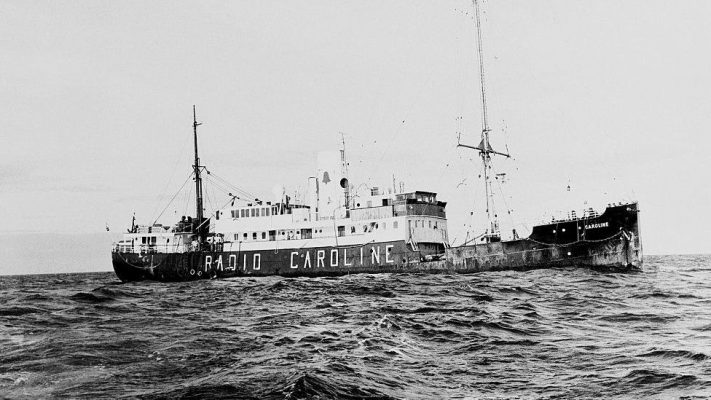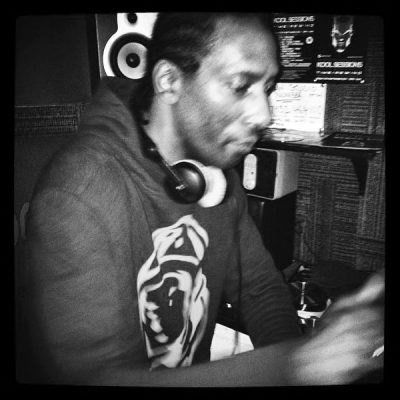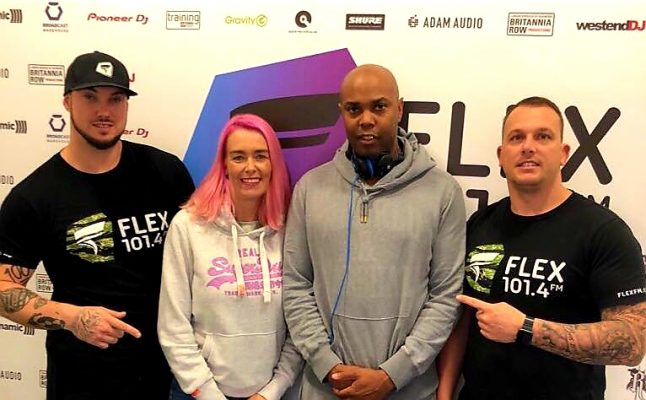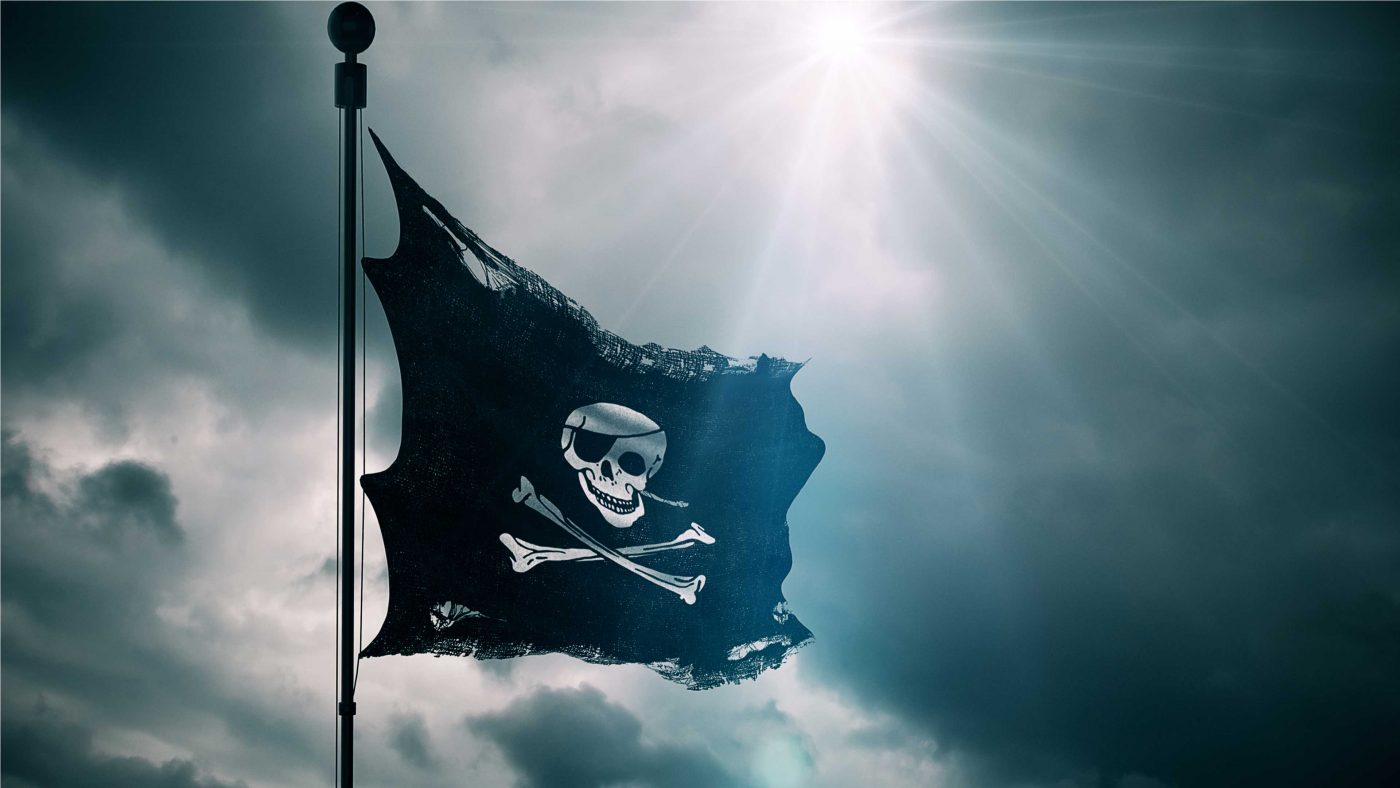Drum and Bass Culture, Music History
Drum and Bass Pirate Radio: The Forgotten Pioneers
Drum and bass pirate radio doesn’t get the air time (excuse the pun) within the history of the scene that it should. However, it played an incredibly vital role in the development and popularity of jungle and drum and bass. Drum and bass pirate radio still exists today, although in a much reduced format. There isn’t really any need for pirate radio, especially on the air waves, as the internet offers a much more viable option; more importantly, you can totally host a radio show online, pretty much for free. It would appear that a lot of drum and bass pirate radio shows are being run for nostalgia’s sake.
We want to take a look at how drum and bass pirate radio shows evolved and the impact they had, not just for the music, but for those that ran them and the community that listened.
A History Of Pirate Radio
Britain is no stranger to pirate radio. The first pirate stations appeared off the coast of the U.K. in the 60’s with the infamous Radio Caroline. This was a boat that was anchored in international waters and flouted the legislation in Britain to bring popular music to millions of people in the country 24 hours a day.
Fast forward to the 90’s and pirate radio has been running for 30 years. The concept for their existence hadn’t changed and was often the driver for more music becoming available to the general public. Ultimately, pirate radio stations played music that wasn’t readily available to the public.

These illegal broadcasters played a constant game of cat and mouse with authorities which eventually brought the shows out of the ocean and on to solid ground. As with most things in life, the advent of smaller, more powerful and cheaper equipment, it became easier than ever for people to set up their own pirate radio stations and hijack the airwaves.
By the mid 90’s London and other cities up and down the country were bristling with pirate antennae blasting all kinds of music to the masses.
 Drum and Bass Pirate Radio For The People
Drum and Bass Pirate Radio For The People
Let’s take a step back here. Drum and bass wasn’t even a thing in the early to mid 90’s. It wasn’t until the late 90’s when drum and bass really started to be defined as its own genre. Jungle was the daddy before this and everyone was hooked.
It’s also unfair to suggest that it was solely jungle and drum and bass pirate radio that ruled the airwaves. All types of music was being played across stations. Grime, hip-hop, reggae, ragga, soul, rnb, jazz, funk, gospel and pretty much everything else. The major cities in the U.K. had already been made into melting pots by the Windrush generation and their culture and taste was permeating through to the next generation of people.
The music being played on pirate radios was influenced by their heritage and it was the perfect breeding ground for the future of those scenes to be developed. Ultimately, the pirate stations were playing music for the people, by the people. Mainstream simply wasn’t cutting it, and the listening numbers were reflecting that in the ratings.
It might be hard to believe, but a lot of the early drum and bass pirate radio shows were making quite a bit of money. Businesses were advertising on their stations and paying them for the privilege. Drum and bass pirate radio stations, as well as the many others, provided the local communities with information about parties, events and other aspects of daily life, all whilst trying to keep themselves hidden from the long arm of the law.
As a result, pirate stations become a proto social media platform. It was where people went to learn more about the latest artists, upcoming events and the newest tracks. Mainstream radio simply couldn’t keep up with the variety of music being played, the pace of delivery or even the volume of local information being distributed.
 Drum and Bass Pirate Radio Pioneers
Drum and Bass Pirate Radio Pioneers
As jungle became the new sound, many artists and dj’s wanted to get their skills heard by as many people as possible. Unlike in today’s world where you can set up a Soundcloud, Instagram or other social media channel to show off your skills and gain followers, in the 90’s and even up until the mid 2000’s, artists weren’t able to easily display their skills.
Drum and bass pirate radio stations became a way for people to reach a wider audience, and get recognition.
Countless artists graced the scene back then; Flight, DJ Chef, Uncle Dugs, Brockie, DJ Ron, Nicky Slim Ting, Slimzee, Marcus Nasty, Jammer, Josey Rebelle, Geeneus and literally hundred of others who went on to become household names. And this is just the drum and bass and jungle side of things. Careers of some of the most famous U.K. artists were all started on pirate stations.
Pirate shows were based around the community. They were for and by the people who lived there and as a result they gave people an opportunity that otherwise wouldn’t have been given to them. None of the mainstream radio stations would have dreamed of giving air time to the upcoming grime scene artists but pirate radio did. Not only that but it actively promoted new talent, as without it, the shows couldn’t progress.
Mainstream radio always was and will continue to be a slow mover, catering only to the largest denomination of listeners. Drum and bass pirate radio stations were producing some of the most forward thinking music of the time. By the time that the mainstream radio got hold of it, they were only playing the biggest tracks and were considerably behind in playing it.
Sadly, the big corporations became wise to the pirate radio tsunami and began to fight fire with fire. They already had the licenses, the reach and the audience. Channels like BBC Radio 1 Extra became available and played music dedicated to these subgenres, even hosted by some of the people who used to run the pirate shows. The legitimisation of the genres was the beginning of the end for drum and bass pirate radio, meaning that the race to evolve was on.
Legitimising Pirate Radio Stations
There are lots of drum and bass internet shows nowadays. They don’t follow the archetypal radio show format, Bloc2Bloc being a prime example of this. There are, however, a few internet radio stations that are survivors of the drum and bass pirate radio days. Kool London, Rinse FM, Rude FM and Flex FM being some of the major players in today’s online radio world.
The thing with these stations becoming license paying, legitimate businesses is that they seem to have lost their edge. Now, what we mean by this is that they don’t represent the illegal, boundary pushing rebelliousness that early drum and bass pirate radio did. We cover topics such as nostalgia in another blog that you can read here, and we also talk about the issue of professionalism within drum and bass in our podcast.

As with all things legitimate, there needs to be order and routine. You’re very unlikely to be able to find the latest artists being given air time who are burgeoning talents. Radio needs regular on air talent. This is where a new format of semi-legitimate radio stations are coming in to play, i.e. Bloc2Bloc. These channels really are giving the spotlight to unknown, as well as established artists. Even though they are able to rotate through established talent, it is just as likely to see someone completely unknown being given air time.
What this transition to more legitimate status has done for drum and bass though is it has, well, legitimised the genre. It’s no longer considered a passing phase, whole industries are being built around this still underground genre. What it hasn’t done for the scene is push it forwards or defined the careers of the newest generation, and that’s okay. There needs to be these resources available in the online space. They continue to uphold the professionalism that drum and bass needs to strive for to develop for the next generation.
A Bygone Era
Drum and bass pirate radio still exists today. You can easily find stations playing, both on the airways and via the internet. However, they aren’t as viciously hunted as they used to be. They simply don’t represent the competition that they once did. There are easier and more legal ways to broadcast that reach a wider audience.
Some of these channels still run on the airwaves, mostly from a nostalgia point of view. A throwback to a more exciting and rebellious time within the foundation of drum and bass. However, it’s incredibly important to understand and recognise that the movement simply may not have had the energy or momentum to continue if the pioneers of drum and bass hadn’t taken extensive risks to put it on the airwaves.

